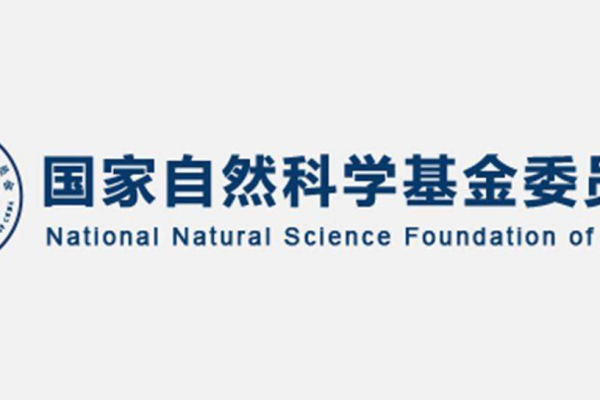Chip发表中南大学张正伟团队长篇综述论文:二维过渡金属硫属化物的晶圆工程
FUTURE远见| 2023-09-08
Future|远见
Future|远见future选编
该综述聚焦二维过渡金属硫族化物(TMDs)的晶圆级制备技术,分析和评价了各类制备技术在晶圆尺度上实现TMDs薄膜的原理、质量以及在电子器件中的性能与应用,并对晶圆级TMDs制备技术面临的挑战和机遇进行了展望。
硅基晶体管的缩小空间已经非常有限,为了延续摩尔定律以及满足电子行业对高性能、低功耗的需求,二维过渡金属硫族化物(TMDs)被发掘出来。它们是一类具有原子级厚度和优异物理性能的材料,在电子和光电领域展现出巨大的应用潜力²。然而,要实现这些应用,还需要在大面积、高质量和可控厚度的条件下制备这些材料。因此,发展晶圆级TMDs制备技术成为了制造新一代电子器件的关键。
图1 | 晶圆级TMDs制备技术。a,使用直接外延生长或化学转化自下而上合成晶圆级薄膜;b, TMD块体通过机械解理和液相剥离的自上而下剥离成晶圆级薄膜。
该综述首先阐述和分析了目前晶圆级TMDs的制备方法的研究进展,它们包括自下而上的外延生长、化学转化法和自上而下的剥离法³⁻⁴(图 1)。直接外延合成与化学转化法是自下而上方法中合成晶圆级薄膜的重要策略,可以实现薄膜的高质量、高均匀性、低晶界密度与可控层数,但要求精确控制生长条件和衬底选择。自上而下的剥离法利用机械剥离或液相剥离将块体TMDs分离成单层或少层,并转移到目标衬底上。它们可以实现薄膜的大面积、高灵活性和高晶体性,但容易引入污染和缺陷,受源晶体大小与结晶性限制。随后评价了基于这些制备技术制备的TMDs的场效应晶体管的性能(表 1),以及它们应用在电子器件的不同集成技术路线中的发展趋势⁵。
表1 | 不同制备方法制备的TMDs晶体管性能总结。
与现有硅工艺路线兼容制造的2D TMD的晶圆规模电子器件能够在现有技术节点下大幅度提升集成密度,同时降低工艺复杂度。使用单层TMD构建集成阵列则在器件缩放方面令人满意。各种溶液处理方法制造的薄膜晶体管同样具有良好的电子性能,且具有室温处理、基板的任意性和晶圆规模的可扩展性等优势(图2和图3)。
图2 | 兼容现有硅工艺的晶圆级异质CFET集成电路制造流程⁶。图片版权:Nature Publishing Group。
图3 | a, 大面积vdW集成工艺⁷;b, 基于溶液处理方法制造的大面积薄膜晶体管阵列⁸。图片版权:Nature Publishing Group。
最后,该综述展望了晶圆级TMDs制备技术目前存在的难题与挑战,包括薄膜种类的多样性、可拓展性、可控性、与现有合成工艺的兼容性等问题。因此,如何进一步发展晶圆级TMDs制备技术是未来研究的重要方向,需要不断探索和优化。
Wafer-scale engineering of two dimensional transition metal chalcogenides¹
This review focuses on the wafer-scale fabrication techniques for two-dimensional transition metal dichalcogenides (TMDs). It analyzes and evaluates various fabrication methods for achieving TMD films at the wafer scale in terms of principles, quality, their performance and applications in electronic devices. Moreover, it offers insights into the challenges and opportunities faced by wafer-scale TMDs fabrication techniques.
With the limited scale for further downsizing silicon-based transistors, the exploration of two-dimensional transition metal dichalcogenides (TMDs) has been prompted to sustain Moore's Law and cater to the electronics industry's demands for heightened performance and reduced power consumption. These materials exhibit remarkable properties with atomic-level thickness and excellent physical characteristics, holding significant potential for applications in electronics and optoelectronics². However, realizing these applications requires the large-area, high-quality, and controlled synthesis of these materials. Thus, the development of wafer-scale TMDs fabrication techniques becomes pivotal for the creation of the next generation of electronic devices.
This review initially presents and analyzes the current research progress in wafer-scale TMDs fabrication methods, encompassing bottom-up epitaxial growth, chemical conversion, and top-down exfoliation approaches³⁻⁴(Fig. 1). Direct epitaxial synthesis and chemical conversion exemplify pivotal strategies within the bottom-up methods, offering high-quality films with uniformity, low grain boundary density, and controlled layer thickness. Nevertheless, precision control over growth conditions and substrate selection is imperative. The top-down exfoliation approach involves mechanical or liquid-phase exfoliation of bulk TMDs into single or few-layer films, which can achieve large area coverage, flexibility, and crystallinity, yet susceptibility to contamination and defects, constrained by the source crystal size and crystallinity. The subsequent assessment encompasses the performance of field-effect transistors based on these fabricated TMDs (Table 1) and their evolving trends within different integration technologies for electronic devices⁵.
2D TMDs wafer-scale electronic devices compatible with existing silicon fabrication processes can significantly enhance integration density at current technology nodes, while reducing process complexity. The use of monolayer TMDs in constructing integrated arrays has proven satisfactory for device scaling. Thin-film transistors manufactured using various solution processing methods also exhibit excellent electronic performance and offer advantages such as room-temperature processing, substrate versatility and wafer-scale scalability (Fig. 2, Fig. 3).
Finally, the review highlights the current challenges and difficulties in wafer-scale TMDs fabrication techniques, including the diversity of film types, scalability, controllability, and compatibility with existing synthesis processes. Therefore, advancing wafer-scale TMDs fabrication techniques remains a crucial research direction for the future, requiring continuous exploration and optimization.
参考文献:
1. Lan, X. et al. Wafer-scale engineering of two-dimensional transition metal dichalcogenides. Chip 2, 100057 (2023).
2. Lin, Z. et al. Van der Waals thin-film electronics. Nat. Electron. 2, 378-388 (2019).
3. Xu, X. et al. Seeded 2D epitaxy of large-area single-crystal films of the van der Waals semiconductor 2H MoTe₂. Science 372, 195-200 (2021).
4. Shim, J. et al. Controlled crack propagation for atomic precision handling of wafer-scale two-dimensional materials. Science 362, 665-670 (2018).
5. Yang, X. et al. Highly reproducible van der Waals integration of two-dimensional electronics on the wafer scale. Nat. Nanotechnol. 18, 471–478 (2023).
6. Tong, L. et al. Heterogeneous complementary field-effect transistors based on silicon and molybdenum disulfide. Nat. Electron. 6, 37–44 (2022).
7. Yang, X. et al. Highly reproducible van der Waals integration of two-dimensional electronics on the wafer scale. Nat. Nanotechnol. 18, 471–478 (2023).
8. Lin, Z. et al. Solution-processable 2D semiconductors for high-performance large-area electronics. Nature 562, 254–258 (2018).
论文链接:
https://www.sciencedirect.com/science/article/pii/S2709472323000205
作者简介
张正伟,中南大学特聘教授。研究领域为半导体材料与器件设计制造,主要开展低维半导体材料晶圆级制造、异质外延、电子器件与特性研究。研究工作多次被相关媒体作为亮点报导,以第一/共一作者身份发表Nature、Science、Nat. Nanotechnol.多篇,研究成果获得「2017年中国电子科技十大进展」、「中国材料研究学会一等奖」等荣誉。
杨向东,宁波工程学院研究员、「阳明学者」特聘教授。研究方向是二维材料及其无损异质集成,目前已在Nature、Science、Nat. Nanotechnol.、Adv. Funct. Mater.、ACS Energy Lett.等期刊上共发表40多篇论文,其中以第一/共一作者身份发表Nature、Science、Nat. Nanotechnol.各一篇,总被引超过2300次。研究成果曾入选中国半导体十大研究进展,2020年获中国材料研究学会科学技术奖一等奖(省部级,排名第五),2023年主持宁波市自然科学基金重点项目。
程英亮,湖南大学材料科学工程学院 教授,博士生导师。研究方向为腐蚀防护、等离子体电解氧化。在Electrochimica Acta, Journal of the American Ceramic Society, Journal of the Electrochemical Society,Surface & Coatings Technology 等专业期刊发表多篇等离子体电解氧化方面的论文。现为,国际电化学学会会员,入选教育部新世纪优秀人才计划,腐蚀电化学及测试方法专业委员会委员,国家自然科学基金函评专家,中国机械工程学会热处理学会理事。
蓝翔,湖南大学材料科学与工程学院2022级硕士研究生,研究方向二维半导体材料的异质外延以及电子器件与特性研究等。
关于Chip
Chip(ISSN:2772-2724,CN:31-2189/O4)是全球唯一聚焦芯片类研究的综合性国际期刊,已入选由中国科协、教育部、科技部、中科院等单位联合实施的「中国科技期刊卓越行动计划高起点新刊项目」,为科技部鼓励发表「三类高质量论文」期刊之一。
Chip期刊由上海交通大学出版,由Elsevier集团联合全球发行,并与多家国内外知名学术组织展开合作,为学术会议提供高质量交流平台。
Chip秉承创刊理念: All About Chip,聚焦芯片,兼容并包,旨在发表与芯片相关的各科研领域尖端突破性成果,助力未来芯片科技发展。迄今为止,Chip已在其编委会汇集了来自14个国家的70名世界知名专家学者,其中包括多名中外院士及IEEE、ACM、Optica等知名国际学会终身会士(Fellow)。
Chip第二卷第三期将于2023年9月在爱思维尔Chip官网以金色开放获取形式(Gold Open Access)发布,欢迎访问阅读本期最新文章。
爱思唯尔Chip官网:
https://www.sciencedirect.com/journal/chip




